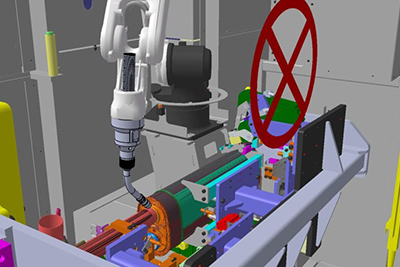Prove The Concept Before Launching The Build

Robotic automation solutions can often bring increased efficiency and speed to any process. But that does not mean that automation is always the best answer. A design can look great on paper but present challenges when constructed.
So many variables exist when it comes to hardware and software, engineers need a way to test all aspects of a design. Here’s how to develop a proof of concept all the way from planning to testing to executing an automation solution.
Follow a Robotic Automation Proof of Concept Process
Before building or working on an automation design, a proof of concept is needed. As the manufacturer or integrator, you must come up with a clear objective for the proposed robotic process, resources that will be needed, as well as a start and end date for the project. Once the primary stakeholders approve, you can start a proven proof of concept process.
Plan and Prepare Your Proof of Concept
In the planning stage, a team can further develop the end goals of the automation process. Manufacturers need to detail what success looks like each step along the way. Some areas to consider are payroll, inventory, development, and project management metrics.
Once the key performance indicators are known, you can start to build out the process. Walk through each step of the current process and figure out how automation will serve your needs. Get to know how and why every step is taken to properly design a solution. Don’t expect to get it all right on the first try. Solicit help from others to avoid tunnel vision and keep evolving the concept until it becomes evident it will be a robust and successful integration.
Execute with a Virtual Solution
Integrators can now use software to simulate an environment for the automated process. The Genesis Virtual Solutions Center offers a complete space to test the proposed robotic automation design. A wide array of variables such as robotic reach, clearances, part orientation, cycle time, and sequencing can be configured.
In the Virtual Solutions Center, 3D simulations can be viewed, prototypes with 3D printing created, workcells laid out, and simulation data analyzed. Record information so it can be reviewed later as needed. Let key stakeholders view it at their convenience.
Conclude with a Valid Proof of Concept
Now that a virtual solution is in the books, it’s time to prove that the concept will work. Meet with the primary stakeholders and explain the solution. Of course, list the benefits. Be open and honest about challenges too.
Show a video or bring in a piece of equipment that will be used in the process to help add more power to the presentation.
See how the Genesis Virtual Solutions Center can help develop a proof of concept to design, test, and build your next robotic automation process.
Posted in Uncategorized